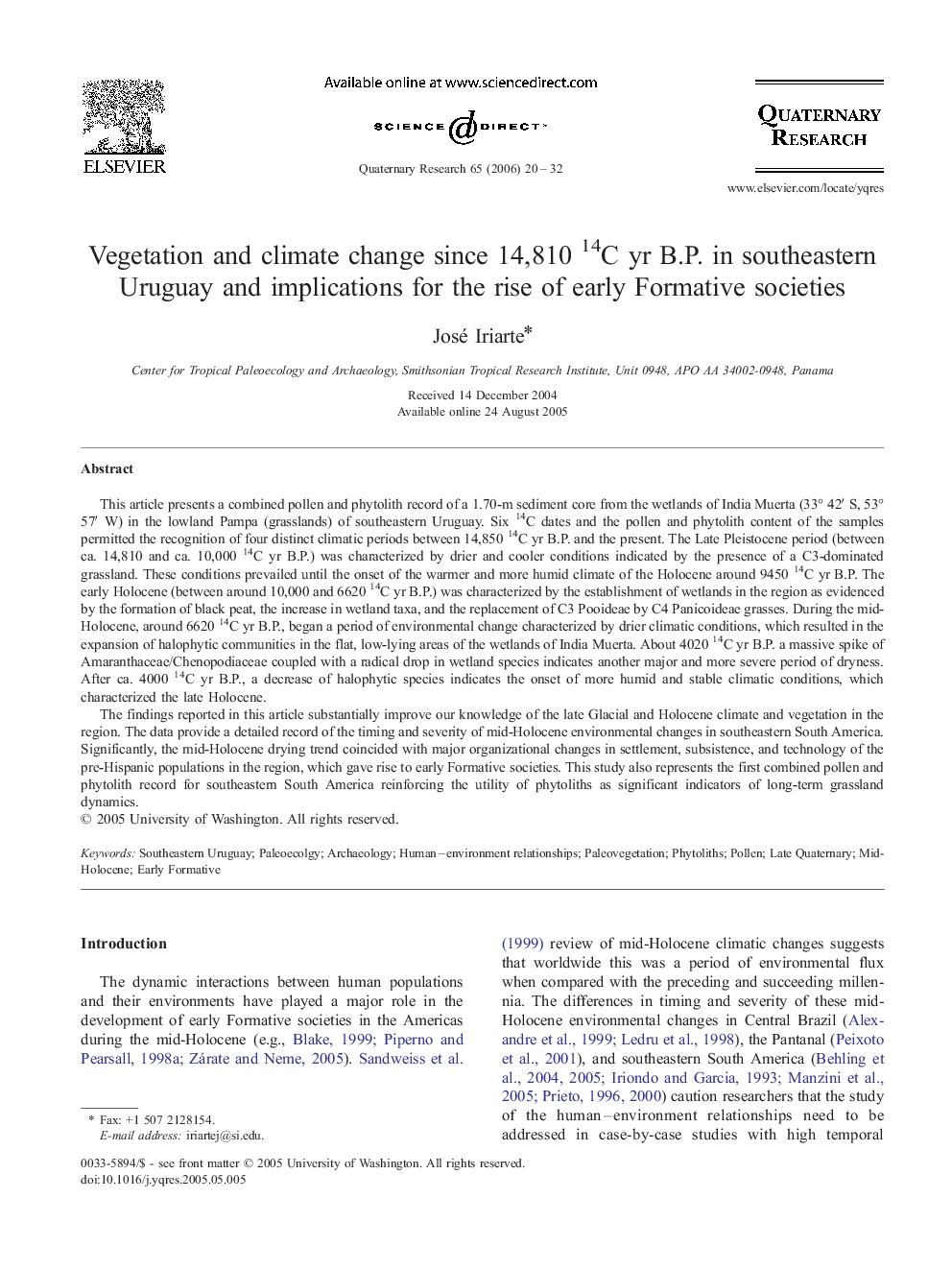| کد مقاله | کد نشریه | سال انتشار | مقاله انگلیسی | نسخه تمام متن |
|---|---|---|---|---|
| 1045755 | 944832 | 2006 | 13 صفحه PDF | دانلود رایگان |

This article presents a combined pollen and phytolith record of a 1.70-m sediment core from the wetlands of India Muerta (33° 42′ S, 53° 57′ W) in the lowland Pampa (grasslands) of southeastern Uruguay. Six 14C dates and the pollen and phytolith content of the samples permitted the recognition of four distinct climatic periods between 14,850 14C yr B.P. and the present. The Late Pleistocene period (between ca. 14,810 and ca. 10,000 14C yr B.P.) was characterized by drier and cooler conditions indicated by the presence of a C3-dominated grassland. These conditions prevailed until the onset of the warmer and more humid climate of the Holocene around 9450 14C yr B.P. The early Holocene (between around 10,000 and 6620 14C yr B.P.) was characterized by the establishment of wetlands in the region as evidenced by the formation of black peat, the increase in wetland taxa, and the replacement of C3 Pooideae by C4 Panicoideae grasses. During the mid-Holocene, around 6620 14C yr B.P., began a period of environmental change characterized by drier climatic conditions, which resulted in the expansion of halophytic communities in the flat, low-lying areas of the wetlands of India Muerta. About 4020 14C yr B.P. a massive spike of Amaranthaceae/Chenopodiaceae coupled with a radical drop in wetland species indicates another major and more severe period of dryness. After ca. 4000 14C yr B.P., a decrease of halophytic species indicates the onset of more humid and stable climatic conditions, which characterized the late Holocene.The findings reported in this article substantially improve our knowledge of the late Glacial and Holocene climate and vegetation in the region. The data provide a detailed record of the timing and severity of mid-Holocene environmental changes in southeastern South America. Significantly, the mid-Holocene drying trend coincided with major organizational changes in settlement, subsistence, and technology of the pre-Hispanic populations in the region, which gave rise to early Formative societies. This study also represents the first combined pollen and phytolith record for southeastern South America reinforcing the utility of phytoliths as significant indicators of long-term grassland dynamics.
Journal: Quaternary Research - Volume 65, Issue 1, January 2006, Pages 20–32